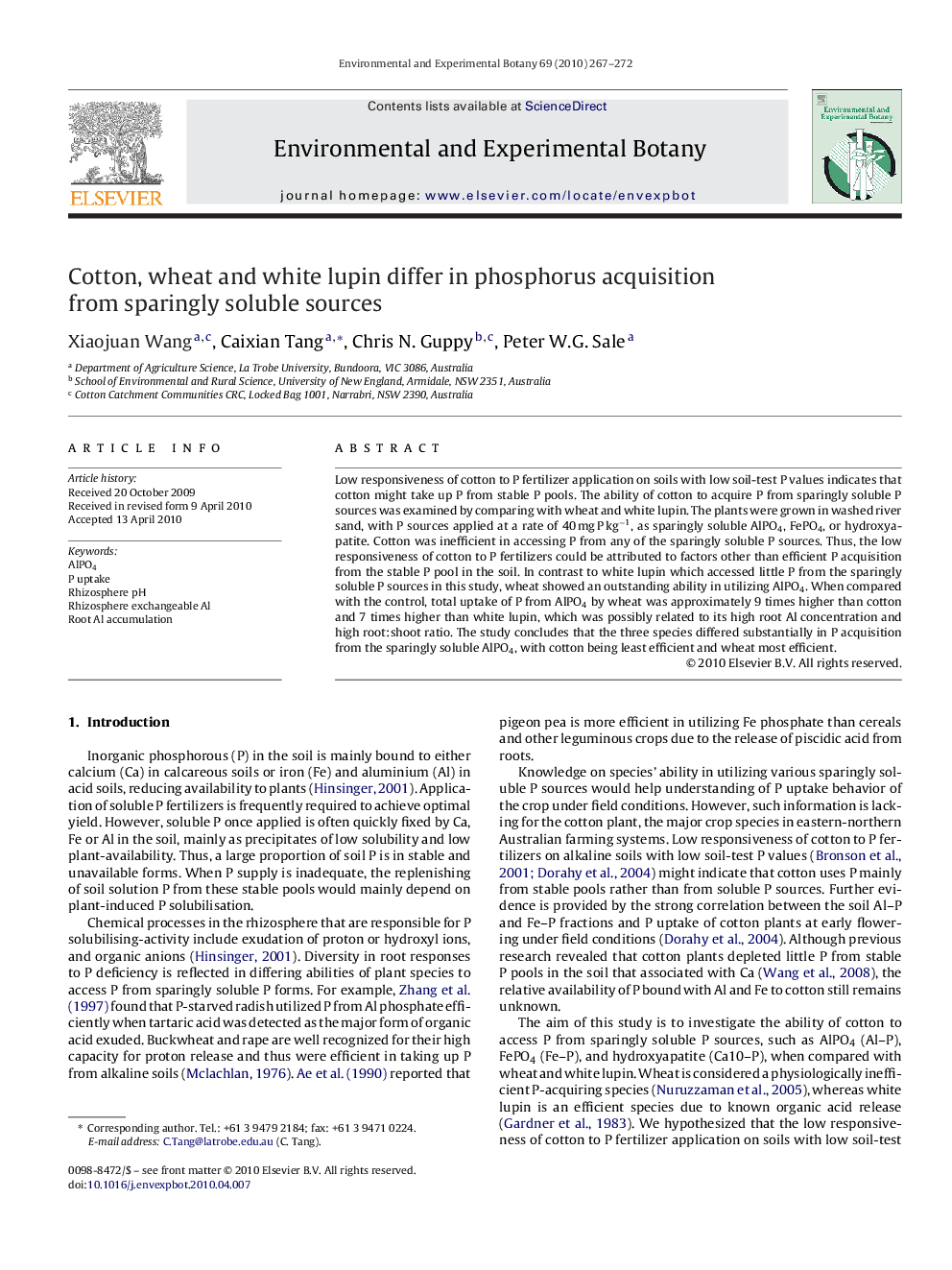| Article ID | Journal | Published Year | Pages | File Type |
|---|---|---|---|---|
| 4555140 | Environmental and Experimental Botany | 2010 | 6 Pages |
Abstract
Low responsiveness of cotton to P fertilizer application on soils with low soil-test P values indicates that cotton might take up P from stable P pools. The ability of cotton to acquire P from sparingly soluble P sources was examined by comparing with wheat and white lupin. The plants were grown in washed river sand, with P sources applied at a rate of 40 mg P kgâ1, as sparingly soluble AlPO4, FePO4, or hydroxyapatite. Cotton was inefficient in accessing P from any of the sparingly soluble P sources. Thus, the low responsiveness of cotton to P fertilizers could be attributed to factors other than efficient P acquisition from the stable P pool in the soil. In contrast to white lupin which accessed little P from the sparingly soluble P sources in this study, wheat showed an outstanding ability in utilizing AlPO4. When compared with the control, total uptake of P from AlPO4 by wheat was approximately 9 times higher than cotton and 7 times higher than white lupin, which was possibly related to its high root Al concentration and high root:shoot ratio. The study concludes that the three species differed substantially in P acquisition from the sparingly soluble AlPO4, with cotton being least efficient and wheat most efficient.
Keywords
Related Topics
Life Sciences
Agricultural and Biological Sciences
Ecology, Evolution, Behavior and Systematics
Authors
Xiaojuan Wang, Caixian Tang, Chris N. Guppy, Peter W.G. Sale,
